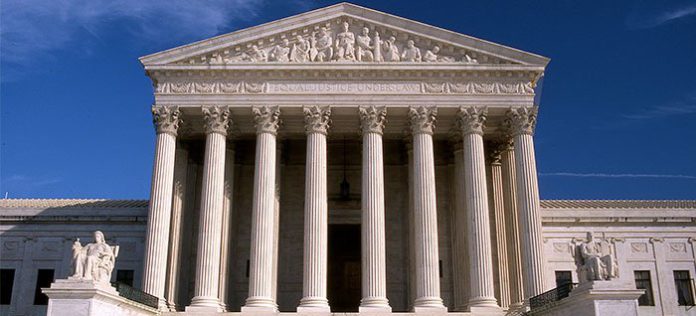

The U.S. Supreme Court had a chance last month to vastly broaden the amount of damages that global companies could recover for sales that infringe on their patents. While its decision did favor a nearly $100 million award a patent owner won for foreign lost profits, WesternGeco v. ION Geophysical Corp. might not see use from many plaintiffs to grab for higher damages.
On June 22, the court ruled 7-2 that a patent owner can recover lost profits earned overseas using a patented device whose components were made in the U.S. Companies and patent attorneys watched the WesternGeco case to see how far the court might go in letting patent owners reap damages from extraterritorial sales. But as it concerns a single, uncommon type of infringement, the decision’s impact is narrow.
ION manufactured components for a rig that attaches to ships, which then use it to survey the ocean floor for oil and gas drilling sites. It sent those components overseas to be assembled by other companies, which then used it to perform the surveying service in contracts. But WesternGeco, which manufactured and used an identical rig, claimed the assembled rig infringed on five of its patents under 35 U.S. Code section 271(f)(2). 271(f) prohibits making components of a patented invention and shipping them out of the U.S. with the intent that they be assembled for a purpose that would infringe on the patent.
A federal jury awarded WesternGeco $12.5 million in reasonable royalties. The jury also awarded $93.4 million in lost profits, which WesternGeco said it would have earned from the contracts if not for the infringing use of its device by the competing companies overseas.
The Federal Circuit Court of Appeals reversed the lost profits award, saying the federal patent statute doesn’t allow a plaintiff to recover lost foreign sales. The Supreme Court, in an opinion written by Justice Clarence Thomas, saw differently.
Citing its 1964 decision in Aro Mfg. Co., Inc. v. Convertible Top, the court said “a patent owner is entitled to recover ‘the difference between [its] pecuniary condition after the infringement, and what [its] condition would have been if the infringement had not occurred.’ … This recovery can include lost profits. … And, as we hold today, it can include lost foreign profits when the patent owner proves infringement under §271(f)(2).”
The court found that the award of foreign damages wasn’t the “statutory focus” — the infringement was — and that “the lost-profits damages that were awarded to WesternGeco were a domestic application of §284.”
Before businesses and their counsel assume the Supreme Court opened the gates for them to chase lost profits for infringement overseas, they should note the uniqueness of the scenario in WesternGeco. The type of infringement at hand — the defendant making patented device components and sending them out of the U.S. to be assembled and not sold, but rather used in a service that was sold — is an uncommon occurrence.
“This is a huge case for very few people,” said Gordon Lindeen III, a shareholder in Hall Estill’s intellectual property section in Denver. But it is a reminder of how a company’s patent strategy and business structure can affect the size of the damages it’s entitled to, he said. If a company can only get a patent on part of a device, it might keep the service using that device in-house. Then if someone infringes on the patent, the company’s lost profits could include the loss of the service, as opposed to just the loss of the device sales, and therefore the recoverable damages can be potentially much higher. Lindeen said WesternGeco is a lesson, albeit not a new one, “on how to maximize the value of your patent.”
Matthew Holohan, an intellectual property litigator and partner at Kilpatrick Townsend & Stockton in Denver, agreed that the WesternGeco opinion is “legally pretty narrow,” but said that might not stop plaintiffs from trying to stretch its reach.
“I think plaintiffs will take this decision and get more creative for finding ways to get foreign profits and foreign damages,” Holohan said, adding that the interconnectedness of the global economy might be another factor they would cite.
In patent cases where foreign lost profits come into play, it doesn’t just increase the potential total damages, which gives the plaintiff more leverage in settlement negotiations. It would also involve foreign discovery, which is often especially costly and difficult to get. But plaintiffs might be more inclined to invest the resources to get that foreign discovery given the potential awards, Holohan said.
Looking at the big picture, WesternGeco appears to go against the current trend of how patent damages are determined, Holohan said.
“It was an interesting case in the sense that it’s an unusual relaxation of damages law in patent cases in a time when courts have recently been cutting down on available patent damages.”
— Doug Chartier

